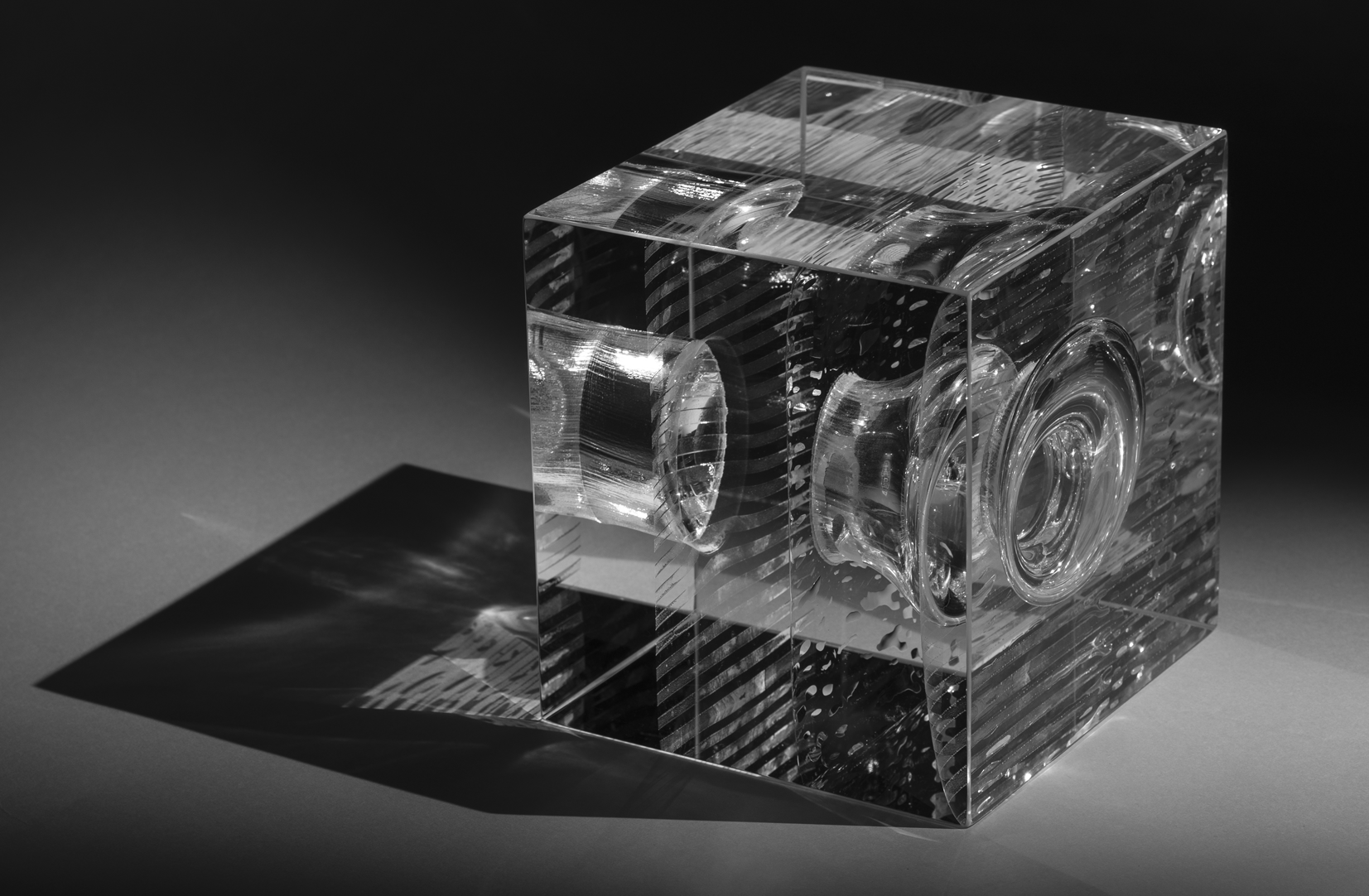Collision | Glass sculpture
by Anna Alsina Bardagí
About the artwork
Title: Collision
Material: Eco optical glass
Edition: Unique artwork
Process: Cast glass, polished
Dimensions: 19.5 H x 19 W x 18 cm (7.6 H x 7.4 W x 7 inches)
Weight: 18.2 kg (40.1 lbs)
Year created: 2020
FAQs about Collision glass sculpture
What techniques were used to create Collision?
Collision was created using glass casting and cold-working techniques. The internal explosion effect was achieved by combining precise water-jet cut shapes with surface treatment and sandblasting before firing.
What was the process behind creating this glass sculpture?
The process of creating Collision was a meticulous journey involving several stages of design, material preparation, and precise kiln-forming techniques.
I began by conceptualizing the piece and creating a prototype cube out of styrofoam. Then I secured the prototype to prevent it from floating and covered it with a hard plaster-silica mix to form the mold.
Once the mold was complete, I carefully emptied the styrofoam, leaving a hollow cavity where the glass would later be placed. The glass was carefully selected and prepped to create the “collision” effect within the sculpture. I calculated the arrangement of the glass blocks, using four precisely measured pieces to ensure the right composition and flow. Two of these blocks featured 7.5 cm waterjet-cut holes, while the other two surfaces were sandblasted with fine, linear patterns created using a 3D file for accuracy.
The glass blocks were then placed in the mold and melted in the kiln at 850ºC, following a 14-stage temperature schedule. This process included a slow annealing phase and a gradual temperature cooldown to relieve any internal stresses in the glass.
Afterward, I spent several weeks cold-working, grinding, and polishing the sculpture to reveal its full clarity. The careful polishing process was crucial in achieving the optical transparency that allows light to pass through the glass, highlighting the depth and intricate details of the piece.
What kind of glass was used in this sculpture?
Collision was created using Ohara’s eco-optical glass, known for its purity and reflective properties. This glass plays a crucial role in achieving the optical effects and illusions within the piece, allowing light to interact with the surface and internal structure.
How long did it take to bring Collision to life?
Creating Collision took over three months, from the initial concept to completing all the steps in the process. Glass casting is a slow and meticulous process that demands a great deal of patience. Each stage, from mold-making to kiln firing and cold-working, requires careful attention to detail and timing.


